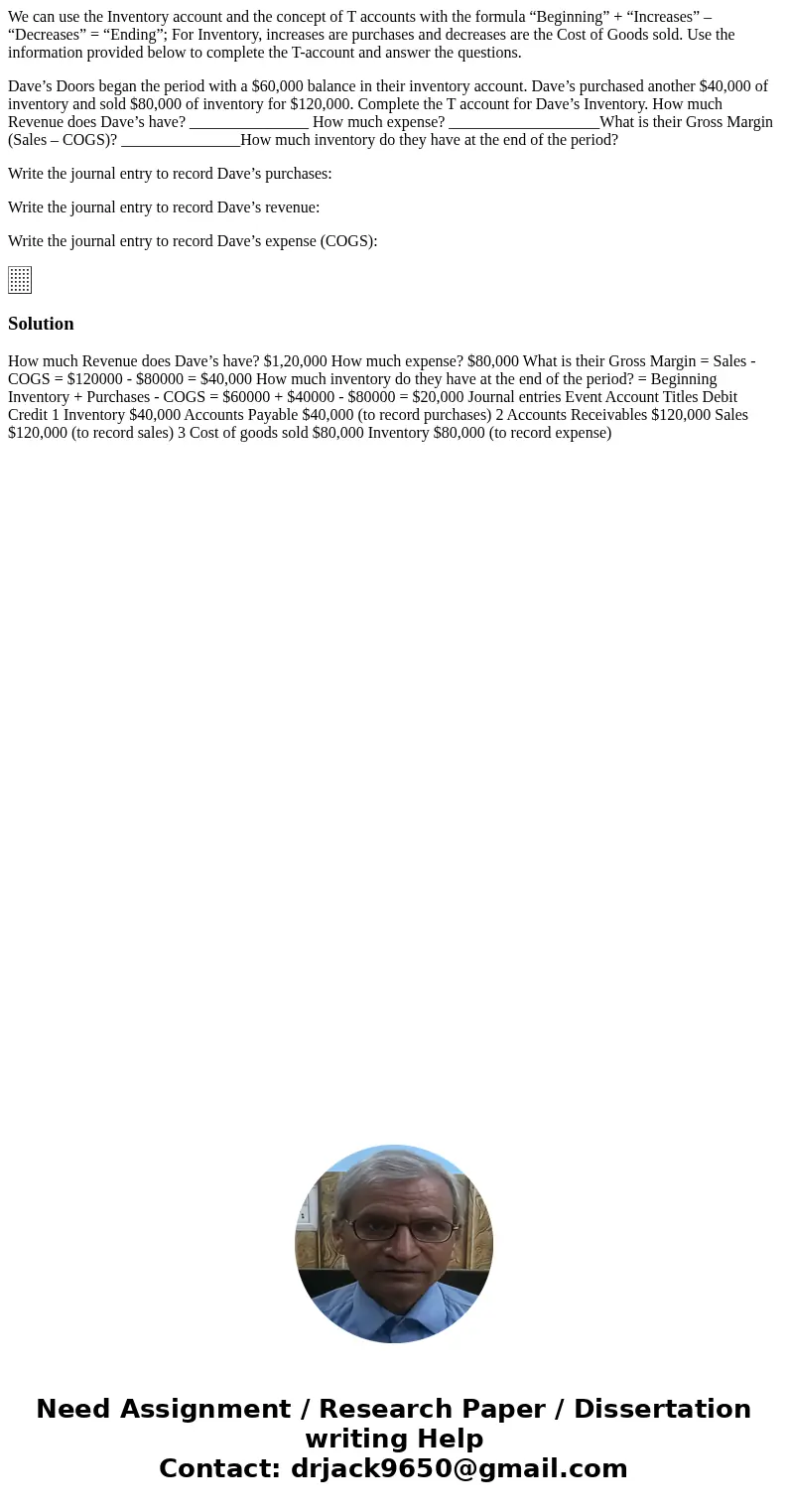We can use the Inventory account and the concept of T accoun
We can use the Inventory account and the concept of T accounts with the formula “Beginning” + “Increases” – “Decreases” = “Ending”; For Inventory, increases are purchases and decreases are the Cost of Goods sold. Use the information provided below to complete the T-account and answer the questions.
Dave’s Doors began the period with a $60,000 balance in their inventory account. Dave’s purchased another $40,000 of inventory and sold $80,000 of inventory for $120,000. Complete the T account for Dave’s Inventory. How much Revenue does Dave’s have? _______________ How much expense? ___________________What is their Gross Margin (Sales – COGS)? _______________How much inventory do they have at the end of the period?
Write the journal entry to record Dave’s purchases:
Write the journal entry to record Dave’s revenue:
Write the journal entry to record Dave’s expense (COGS):
Solution
How much Revenue does Dave’s have? $1,20,000 How much expense? $80,000 What is their Gross Margin = Sales - COGS = $120000 - $80000 = $40,000 How much inventory do they have at the end of the period? = Beginning Inventory + Purchases - COGS = $60000 + $40000 - $80000 = $20,000 Journal entries Event Account Titles Debit Credit 1 Inventory $40,000 Accounts Payable $40,000 (to record purchases) 2 Accounts Receivables $120,000 Sales $120,000 (to record sales) 3 Cost of goods sold $80,000 Inventory $80,000 (to record expense)
 Homework Sourse
Homework Sourse